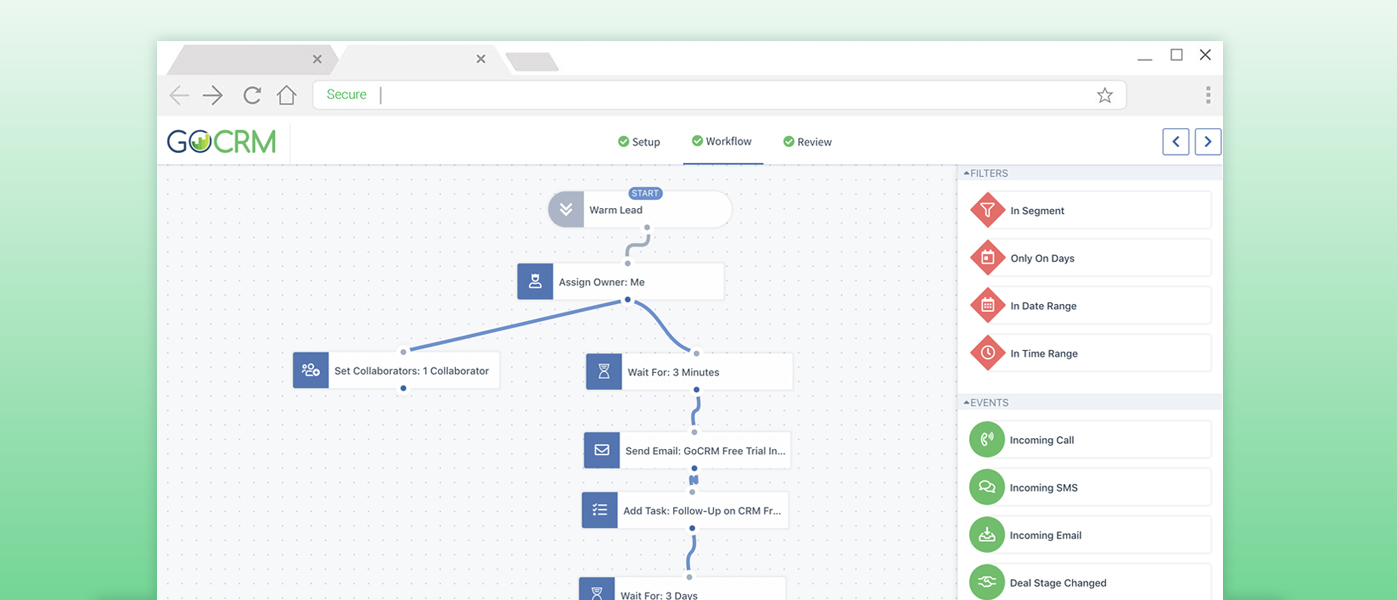
Automations are flows that you build out in a visual canvas by connecting shapes, these shapes create different personalized pathways, that contact would progress to when interacting with your business. It allows for the easy and efficient delivery of information to your contacts.
Automation Settings
Each automation starts with a segment, the segment defines which contacts should enter the automation. It may be that they are on a static list or they submitted a form.

Workflow
There are 3 different types of shapes in GoCRM, these are filers, events, and actions.
Actions
Actions are things that happen to contacts when they are in an automation. You may want to send them an email or an sms or wait for a certain period of time to pass to follow-up. You can also do updates like adding contacts to a list, or creating a task.

Filters
Filters are the traffic directors of the automation, they check if a contact meets certain criteria and then routes them accordingly. For example, I may want to send a different text message to contacts depending on the time of day, or if it’s a weekday or a weekend, or if they have responded in the past or not.

Events
Events are conditions in order for the next step to continue, the automation waits until the user or contact has completed one of these steps before progressing to the next shape. For example, the automation may wait until the contact has replied to a text message, or the deal stage has been changed by a user.

Now we will connect each action shape together, when connecting a filter, make sure to select the appropriate option to stop or progress contacts through the automation. When these shapes are connected into sequences the automation will progress through each stage doing exactly what you tell it to. Automations will not become active until you’re completely ready to go, this means there are no accidental emails sent or confused customers.
When you’re ready you hit Start Automation, and the automation will do the busy work for you. For ideas on how you can use automations, visit our blog! But for now, that’s what is an automation.




